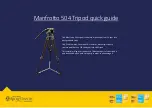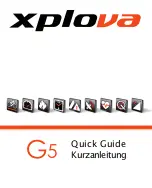
32
INITIAL SETTING AND BASIC OPERATION
Find Polaris from Cassiopeia and the Big Dipper
A rough setting with a compass or pointing the polar axis of your telescope’s mount at Polaris will work well for visual observation.
The constellations Cassiopeia and the Big Dipper (part of Ursa Major) are near Polaris. You will be able to find Polaris if you know the
position of these groups of stars. Cassiopeia and the Big Dipper are autumn and spring constellations respectively. For most of the
year either constellation is always above the eastern or western horizon.
Locate t he t wo stars t hat form t he outer edge of t he Big Dipper as shown in the above map. Draw an imaginary line straight through the
two stars of the dipper edge. You will see Polaris equidistant between the constellations.
Cassiopeia looks like the letter “W” or the letter “M” depending on when you observe it. Draw imaginary lines from the stars that form
the outer edges of the letter “W” so that the two lines intersect. Draw an imaginary line from the center of the “W” through the cross
point of your first line. Extend it straight through by about 5 times to get to Polaris.
Directions 1:
Directions 2:
Extend 5 times
Polaris
Extand 5 times
Cassiopeia
Big Dipper
Find Polaris using the guide map below.
















































